Related Research Articles

The First Amendment to the United States Constitution prevents the government from making laws that: regulate an establishment of religion; prohibit the free exercise of religion; abridge the freedom of speech, the freedom of the press, the freedom of assembly, or the right to petition the government for redress of grievances. It was adopted on December 15, 1791, as one of the ten amendments that constitute the Bill of Rights.
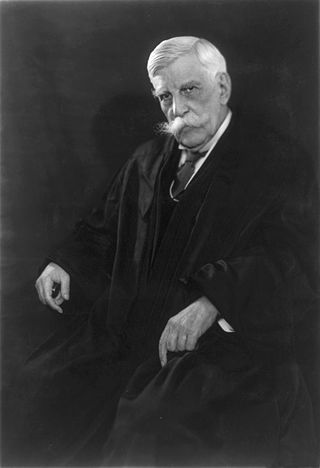
Clear and present danger was a doctrine adopted by the Supreme Court of the United States to determine under what circumstances limits can be placed on First Amendment freedoms of speech, press, or assembly. Created by Justice Oliver Wendell Holmes Jr. to refine the bad tendency test, it was never fully adopted and both tests were ultimately replaced in 1969 with Brandenburg v. Ohio's "imminent lawless action" test.
Brandenburg v. Ohio, 395 U.S. 444 (1969), is a landmark decision of the United States Supreme Court interpreting the First Amendment to the U.S. Constitution. The Court held that the government cannot punish inflammatory speech unless that speech is "directed to inciting or producing imminent lawless action and is likely to incite or produce such action". Specifically, the Court struck down Ohio's criminal syndicalism statute, because that statute broadly prohibited the mere advocacy of violence. In the process, Whitney v. California (1927) was explicitly overruled, and Schenck v. United States (1919), Abrams v. United States (1919), Gitlow v. New York (1925), and Dennis v. United States (1951) were overturned.
United States v. Eichman, 496 U.S. 310 (1990), was a United States Supreme Court case that by a 5–4 decision invalidated a federal law against flag desecration as a violation of free speech under the First Amendment. It was argued together with the case United States v. Haggerty. It built on the opinion handed down in the Court's decision the prior year in Texas v. Johnson (1989), which invalidated on First Amendment grounds a Texas state statute banning flag burning.
Tinker v. Des Moines Independent Community School District, 393 U.S. 503 (1969), was a landmark decision by the United States Supreme Court that recognized the First Amendment rights of students in U.S. public schools. The Tinker test, also known as the "substantial disruption" test, is still used by courts today to determine whether a school's interest to prevent disruption infringes upon students' First Amendment rights. The Court famously opined, "It can hardly be argued that either students or teachers shed their constitutional rights to freedom of speech or expression at the schoolhouse gate."
Texas v. Johnson, 491 U.S. 397 (1989), is a landmark decision by the Supreme Court of the United States in which the Court held, 5–4, that burning the Flag of the United States was protected speech under the First Amendment to the U.S. Constitution, as doing so counts as symbolic speech and political speech.
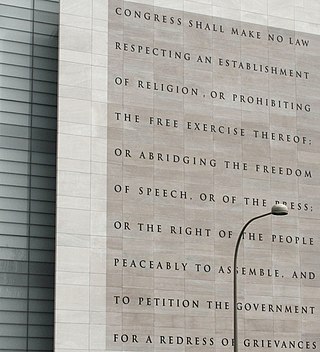
In the United States, freedom of speech and expression is strongly protected from government restrictions by the First Amendment to the U.S. Constitution, many state constitutions, and state and federal laws. Freedom of speech, also called free speech, means the free and public expression of opinions without censorship, interference and restraint by the government. The term "freedom of speech" embedded in the First Amendment encompasses the decision what to say as well as what not to say. The Supreme Court of the United States has recognized several categories of speech that are given lesser or no protection by the First Amendment and has recognized that governments may enact reasonable time, place, or manner restrictions on speech. The First Amendment's constitutional right of free speech, which is applicable to state and local governments under the incorporation doctrine, prevents only government restrictions on speech, not restrictions imposed by private individuals or businesses unless they are acting on behalf of the government. However, It can be restricted by time, place and manner in limited circumstances. Some laws may restrict the ability of private businesses and individuals from restricting the speech of others, such as employment laws that restrict employers' ability to prevent employees from disclosing their salary to coworkers or attempting to organize a labor union.
United States v. O'Brien, 391 U.S. 367 (1968), was a landmark decision of the United States Supreme Court, ruling that a criminal prohibition against burning a draft card did not violate the First Amendment's guarantee of free speech. Though the court recognized that O'Brien's conduct was expressive as a protest against the Vietnam War, it considered the law justified by a significant government interest unrelated to the suppression of speech and was tailored towards that end.
Stromberg v. California, 283 U.S. 359 (1931), was a landmark decision of the Supreme Court of the United States in which the Court held, 7–2, that a California statute banning red flags was unconstitutional because it violated the First and Fourteenth Amendments to the United States Constitution. In the case, Yetta Stromberg was convicted for displaying a red flag daily in the youth camp for children at which she worked, and was charged in accordance with California law. Chief Justice Charles Hughes wrote for the seven-justice majority that the California statute was unconstitutional, and therefore Stromberg's conviction could not stand.
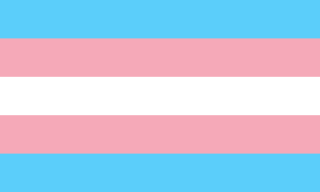
Virginia v. Black, 538 U.S. 343 (2003), was a landmark decision of the Supreme Court of the United States in which the Court held, 5–4, that any state statute banning cross burning on the basis that it constitutes prima facie evidence of intent to intimidate is a violation of the First Amendment to the Constitution. Such a provision, the Court argued, blurs the distinction between proscribable "threats of intimidation" and the Ku Klux Klan's protected "messages of shared ideology". In the case, three defendants were convicted in two separate cases of violating a Virginia statute against cross burning. However, cross-burning can be a criminal offense if the intent to intimidate is proven. It was argued by former Solicitor General of Virginia, William Hurd and Rodney A. Smolla.
Morse v. Frederick, 551 U.S. 393 (2007), is a United States Supreme Court case where the Court held, 5–4, that the First Amendment does not prevent educators from prohibiting or punishing student speech that is reasonably viewed as promoting illegal drug use.
The following is a timeline of the flag of the United States.
Barnes v. Glen Theatre, Inc., 501 U.S. 560 (1991), was a landmark decision of the U.S. Supreme Court concerning the First Amendment and the ability of the government to outlaw certain forms of expressive conduct. It ruled that the state has the constitutional authority to ban public nudity, even as part of expressive conduct such as dancing, because it furthers a substantial government interest in protecting the morality and order of society. This case is perhaps best summarized by a sentence in Justice Souter's concurring opinion, which is often paraphrased as "Nudity itself is not inherently expressive conduct."
Hurley v. Irish-American Gay, Lesbian, and Bisexual Group of Boston, 515 U.S. 557 (1995), was a landmark decision of the US Supreme Court regarding free speech rights, specifically the rights of groups to determine what message their activities convey to the public. The Court ruled that private organizations, even if they were planning on and had permits for a public demonstration, were permitted to exclude groups if those groups presented a message contrary to the one the organizing group wanted to convey. Addressing the specific issues of the case, the Court found that private citizens organizing a public demonstration may not be compelled by the state to include groups who impart a message the organizers do not want to be presented by their demonstration, even if the intent of the state was to prevent discrimination.
Erie v. Pap's A. M., 529 U.S. 277 (2000), was a landmark decision by the Supreme Court of the United States regarding nude dancing as free speech. The court held that an ordinance banning public nudity did not violate the operator of a totally nude entertainment establishment's constitutional right to free speech.
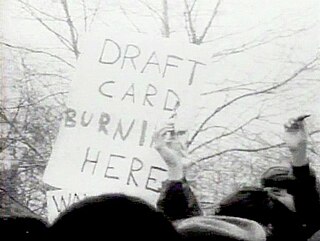
Draft-card burning was a symbol of protest performed by thousands of young men in the United States and Australia in the 1960s and early 1970s as part of the anti-war movement. The first draft-card burners were American men participating in the opposition to United States involvement in the Vietnam War. The first well-publicized protest was in December 1963, with a 22-year-old conscientious objector, Gene Keyes, setting fire to his card on Christmas Day in Champaign, Illinois. In May 1964, a larger demonstration, with about 50 people in Union Square, New York, was organized by the War Resisters League chaired by David McReynolds.
Clark v. Community for Creative Non-Violence, 468 U.S. 288 (1984), is a United States Supreme Court case with the National Park Service's regulation which specifically prohibited sleeping in Lafayette Park and the National Mall at issue. The Community for Creative Non-Violence (CCNV) group had planned to hold a demonstration on the National Mall and Lafayette Park where they would erect tent cities to raise awareness of the situation of the homeless. The group obtained the correct permits for a seven-day demonstration starting on the first day of winter. The Park Service however denied the request that participants be able to sleep in the tents. The CCNV challenged this regulation on the basis that it violated their First Amendment right.
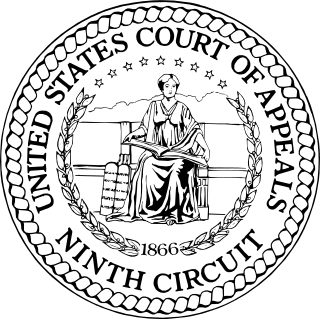
Anderson v. City of Hermosa Beach, 621 F. 3d 1051 (2010), was a decision by the U.S. Court of Appeals for the Ninth Circuit, which ruled that tattoos, the process of tattooing, and the business of tattooing are pure expressive activities that are fully protected by the First Amendment's free speech clause. The court determined that the process of tattooing constitutes pure expressive activity rather than conduct that is sufficiently imbued with elements of communication. As pure expressive activity, the process of tattooing can only be regulated by a proper time, place, and manner restriction. The court found in Anderson v. The City of Hermosa Beach that the Hermosa Beach Municipal Code banning tattoo parlors within the city was not a reasonable time, place, and manner restriction because the regulation was not narrowly tailored to meet the government's interest and the regulation did not leave open ample alternative avenues for the same messages to be conveyed.
Hate speech in the United States cannot be directly regulated by the government due to the fundamental right to freedom of speech protected by the Constitution. While "hate speech" is not a legal term in the United States, the U.S. Supreme Court has repeatedly ruled that most of what would qualify as hate speech in other western countries is legally protected speech under the First Amendment. In a Supreme Court case on the issue, Matal v. Tam (2017), the justices unanimously reaffirmed that there is effectively no "hate speech" exception to the free speech rights protected by the First Amendment and that the U.S. government may not discriminate against speech on the basis of the speaker's viewpoint.
Spence v. Washington, 418 U.S. 405 (1974), was a United States Supreme Court case dealing with non-verbal free speech and its protections under the First Amendment. The Court, in a per curiam decision, ruled that a Washington state law that banned the display of the American flag adorned with additional decorations was unconstitutional as it violated protected speech. The case established the Spence test that has been used by the judicial system to determine when non-verbal speech may be sufficiently expressive for First Amendment protections.
References
- ↑ "symbolic speech". Law Dictionary, FindLaw.
- 1 2 3 Epstein, Lee and Walker, Thomas G. (1998) "Constitutional Law for a Changing America: Rights, Liberties, and Justice" 3rd ed. pp. 258-280 Washington D.C.: Congressional Quarterly Inc.
- 1 2 3 Tomasik, Sandy (2015). "Can You Understand this Message? An Examination of Hurley v. Irish-American Gay, Lesbian & Bisexual Group of Boston's Impact on Spence v. Washington". St. John's Law Review . 89: 265.
- ↑ Syllabus for Tinker v. Des Moines
- ↑ The facts of O'Brien's protest, arrest, and trial are summarized in the Supreme Court's opinion, United States v. O'Brien, 391 U.S. 367, 369-70 (1968).
- 1 2 Epstein, Lee and Walker, Thomas G. (1998) "Constitutional Law for a Changing America: rights, liberties, and justice" 3rd ed. pp. 258-280 Washington D.C.: Congressional Quarterly Inc.
- ↑ Cohen v. California , 403 U.S. 15 (1971)
- ↑ Housley, Caitlin (2014). "A Uniform Test Isn't Here Right Now, but Please Leave a Message: How Altering the Spence Symbolic Speech Test Can Better Meet the Needs of an Expressive Society". Kentucky Law Journal . 103: 657.
- Merriam-Webster's Dictionary of Law ©1996. Merriam-Webster, Incorporated. Published under license with Merriam-Webster, Incorporated.
- Epstein, Lee and Walker, Thomas G. (1998) "Constitutional Law for a Changing America: rights, liberties, and justice" 3rd ed. pp. 258–280 Washington D.C.: Congressional Quarterly Inc.
- The facts of Tinker's protest, suspension, and their lawyers' case are summarized in the Supreme Court's opinion, Tinker v. Des Moines Independent Community School District, 393 U.S. 503, (1969)
- The facts of O'Brien's protest, arrest, and trial are summarized in the Supreme Court's opinion, United States v. O'Brien, 391 U.S. 367, 369-70 (1968).
- The facts of Johnson's protest, arrest, and trial are summarized in the Supreme Court's opinion, Texas v. Johnson, 491 U.S. 397 (1989)
- The facts of Cohen's arrest and trial are summarized in the Supreme Court's opinion, Cohen v. California, 403 U.S. 15, (1971)